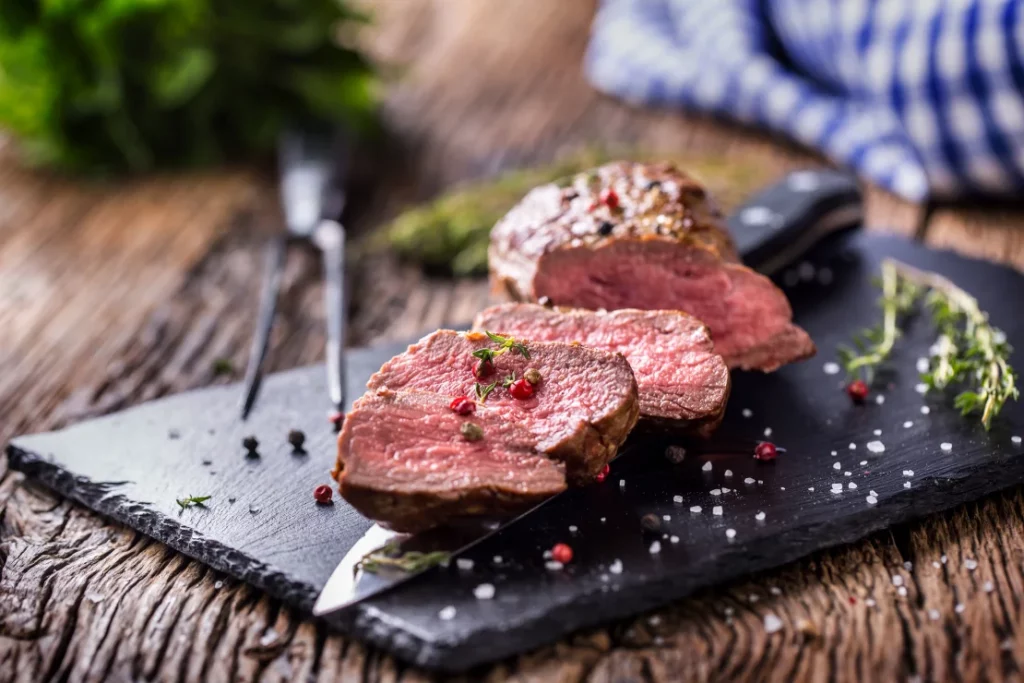A large new study by Harvard researchers suggests having just two servings of red meat per week increases risk for developing type 2 diabetes later in life, and the risk further increases with greater consumption, according to the study published Thursday in the American Journal of Clinical Nutrition.
“The association between red meat and type 2 diabetes has been observed in different populations worldwide,” said the study’s first author Xiao Gu, a postdoctoral research fellow of nutrition at the Harvard T.H. Chan School of Public Health, via email. “We keep strengthening existing evidence with improved data and techniques. I hope our study could settle the debate regarding whether we should limit red meat intake for health concerns or not.”

About 462 million people worldwide are affected by type 2 diabetes, a rate that has been rapidly increasing, the authors said.
“Prevention of diabetes is important because this disease is itself a serious burden, and it also is a major risk factor for cardiovascular and kidney disease, cancer, and dementia,” Gu said.
Consumption of red meat has been linked with type 2 diabetes risk in past studies, but the authors of the latest research wanted to improve upon them by adding details about how diabetes diagnoses and related biomarkers were affected by intake over a long period of time.
The authors studied 216,695 people who had participated in the Nurses’ Health Study, the Nurses’ Health Study II and the Health Professionals Follow-up Study, all of which recruited participants from around 1976 to 1989. The first two studies investigated risk factors for major chronic diseases among female registered nurses in North America, while the latter study assessed the same topics but for men.
Participants, most of whom were White, were age 46 on average at the beginning of the NHS, 36 when NHS II began, and 53 when the HPFS was initiated. All were followed up with through no later than 2017. Participants reported their health status every other year via questionnaire, and their food intake was also measured every two to four years with questionnaires that asked them to report their average intake of different foods and beverages over the past year.
By the end of the follow-up periods, nearly 22,800 people developed type 2 diabetes, and those who ate the most total red meat had a 62% higher risk of developing the disease, compared with people who ate the least. Eating the most processed or unprocessed red meat was linked with a 51% and 40% higher risk of type 2 diabetes, respectively.
Processed meat, the authors defined, included sausage, beef or pork hot dogs, bacon, processed meat sandwiches; one serving equaled 28 grams of bacon or 45 grams of the other meats.
Unprocessed meat included lean or extra lean hamburger, regular hamburger, beef, pork or lamb as a sandwich or mixed dish; and pork, beef or lamb as a main dish. Eighty-five grams of pork, beef or lamb constituted one serving of unprocessed meat.
“The results of this study, which was extremely comprehensive, confirmed current dietary guidance to limit red meat intake,” said Alice Lichtenstein, Gershoff Professor of Nutrition Science and Policy and Tufts University in Boston, via email. Lichtenstein wasn’t involved in the study.
Additionally, swapping a meat serving for nuts or legumes meant a 30% reduction in risk for developing type 2 diabetes, while opting for dairy instead reduced the odds by 22%.
“Of note, individuals who reported consuming red meat most frequently within each cohort were more likely to eat less fish (or) fruit and (more) calories, weigh more, and engage in less physical activity,” added Lichtenstein, who is also the director of Tuft University’s Cardiovascular Nutrition Laboratory. “This suggests they had poorer overall diet quality and were less likely to engage (in) healthy lifestyle behaviors.”
The relationship between meat and diabetes
The study doesn’t prove that eating red meat causes type 2 diabetes, said Gunter Kuhnle, a professor of nutrition and food science at the University of Reading in the UK. He wasn’t involved in the study.
But multiple biological factors could have affected the relationship between red meat and type 2 diabetes, the authors said.
For one, saturated fat, which is high in red meat, has been found to reduce insulin sensitivity and functioning of the beta cells in the pancreas, which produce insulin in a regulated manner to manage blood glucose.
Additionally, heme iron — the type of iron found in animal foods — can increase insulin resistance, impairment of beta cell functioning and oxidative stress, the imbalance of free radicals and antioxidants in the body. Free radicals, unstable molecules from environmental sources such as cigarette smoke or pesticides, can harm the body’s cells.
Elevated use of the amino acid glycine, which naturally occurs in most proteins, has also been observed after red meat intake and is associated with diabetes risk, the authors said. Excess body fat is another risk factor for diabetes, and red meat consumption was one of the dietary factors with the largest association with weight gain, according to the study.
Limiting your red meat intake can be done by reducing frequency or portion size, and a combination of both habit changes is best, Lichtenstein said.
“Consistently reported, dairy, legumes and nuts are the best foods with which to replace the red meat,” she added. “For the former, given the concern about saturated fat and beta-cell function, I would recommend fat-free and low-fat products.”
Given the findings, limiting red meat consumption to about one serving per week “would be reasonable for people wishing to optimize their health and wellbeing,” said senior study author Dr. Walter C. Willett, professor of epidemiology and nutrition at Harvard T.H. Chan School of Public Health, in a news release.
Choosing plant-based sources of protein would also help reduce greenhouse gas emissions and climate change, Gu said, along with other environmental benefits.

